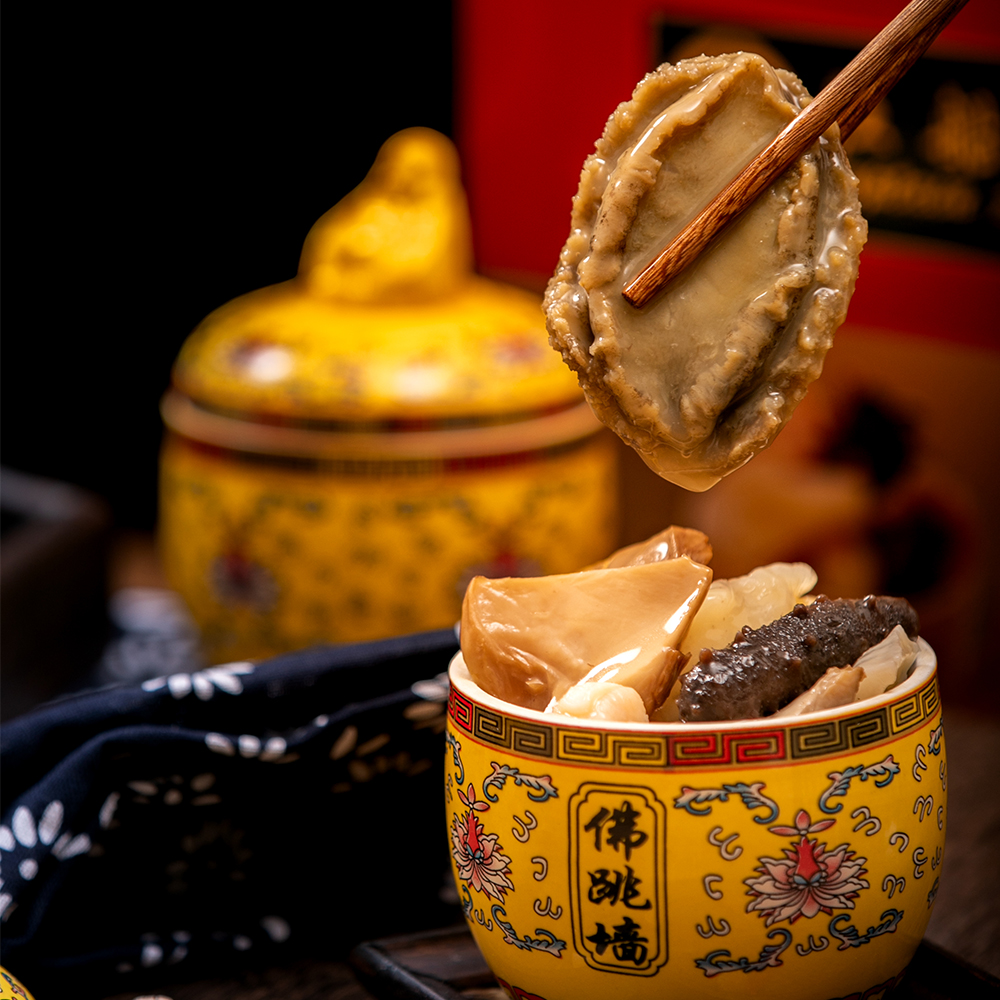The Legendary Delicacy: Buddha Jumps Over the Wall (佛跳墙)
Introduction
When it comes to Chinese gourmet cuisine, few dishes carry as much prestige, history, and complexity as Fo Tiao Qiang (佛跳墙), literally translated as "Buddha Jumps Over the Wall." This luxurious dish, originating from Fujian Province, is a masterpiece of slow-cooked ingredients, rich broth, and exquisite flavors. Its name whimsically suggests that the aroma is so irresistible that even a vegetarian Buddha would abandon his principles to taste it.
In this blog, we’ll explore
The fascinating history and legend behind Buddha Jumps Over the Wall
The key ingredients that make it extraordinary
The cooking process—why it’s considered one of China’s most labor-intensive dishes
Its cultural significance and modern adaptations
The Legend Behind the Name
The dish’s peculiar name comes from a famous Chinese folktale. One version tells of a scholar who, while traveling, cooked this dish outside a temple. The smell was so intoxicating that the monks inside—who had taken vows of vegetarianism—couldn’t resist peeking over the wall to see what was cooking. Another version claims that a poet, upon smelling the dish, wrote: "Even Buddha would jump over the wall to eat this!"
Historically, Buddha Jumps Over the Wall dates back to the Qing Dynasty (1644-1912). It was originally a humble dish made from leftover ingredients, but over time, it evolved into a luxury banquet centerpiece, often served at imperial feasts and high-end restaurants.
The Ingredients: A Symphony of Luxury
What makes Buddha Jumps Over the Wall so special is its combination of rare and premium ingredients, each contributing to its deep, layered umami flavor. Traditional versions include:

1. Seafood & Meat
Abalone (鲍鱼) – Adds a tender, briny sweetness
Sea cucumber (海参) – Prized for its gelatinous texture
Shark fin (鱼翅) – Though controversial, it was historically used for its silky mouthfeel (many modern versions omit this)
Dried scallops (干贝) – Intensifies the broth’s umami
Pork tendons (猪蹄筋) – Provides a rich, collagen-filled chew
Chicken (鸡) – Often a whole chicken or just the feet for gelatin
2. Preserved & Fermented Flavors
Jinhua ham (金华火腿) – A cured ham that deepens the broth’s savoriness
Shaoxing wine (绍兴酒) – A fragrant rice wine essential for balancing flavors
Dried mushrooms (香菇) – Earthy depth
3. Broth & Aromatics
The broth is simmered for hours (sometimes days) using chicken, pork bones, and sometimes duck to create a thick, velvety consistency.
Spices like ginger, star anise, and cinnamon add warmth.
(Note: Due to ethical concerns, many chefs now use substitutes for shark fin and bird’s nest, making the dish more sustainable.)
The Cooking Process: A Labor of Love
Preparing authentic Buddha Jumps Over the Wall is a multi-day endeavor, requiring meticulous attention to detail. Here’s a simplified breakdown:
1. Preparation (1-2 Days)
Soak dried ingredients (abalone, sea cucumber, scallops) for 24-48 hours, changing water frequently.
Blanch meats to remove impurities.
2. Layering & Slow Cooking (8-12 Hours)
Ingredients are layered in a clay pot or ceramic jar with the most delicate items on top.
The pot is sealed with lotus leaves or dough to trap steam and aroma.
Simmered over low heat to allow flavors to meld.
3. Final Presentation
The seal is broken at the table, releasing an explosion of fragrance.
Served with a small cup of Shaoxing wine to enhance the taste.
Cultural Significance & Modern Adaptations
Buddha Jumps Over the Wall is more than just food—it’s a symbol of celebration, wealth, and culinary artistry. It’s traditionally served at:
Wedding banquets (as a display of generosity)
Business dinners (to impress guests)
Chinese New Year feasts (for prosperity)
Today, chefs have created simplified, vegetarian, or even vegan versions to cater to modern tastes. Some high-end restaurants offer individual portions in small clay pots, making it more accessible.
Conclusion: Would Buddha Really Jump Over the Wall?
After learning about its history, ingredients, and preparation, it’s easy to see why Buddha Jumps Over the Wall remains one of China’s most legendary dishes. Whether you view it as an indulgent delicacy or a cultural treasure, there’s no denying its place in the pantheon of world-class gourmet cuisine.
Have you ever tried Buddha Jumps Over the Wall? If so, did it live up to the legend? Share your thoughts in the comments!




